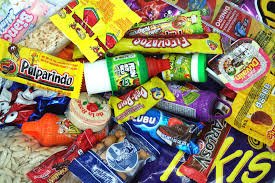Mexican candy is a delightful fusion of indigenous flavors and Spanish influences, offering a unique and diverse range of sweets that tantalize the taste buds. From spicy tamarind treats to sweet coconut confections, Mexican candy reflects the country’s rich cultural heritage and regional diversity. This article delves into the history, varieties, cultural significance, and global influence of Mexican candy, providing a comprehensive understanding of its role in Mexican society and beyond.
Table of Contents
The Origins of Mexican Candy
The roots of Mexican candy trace back to pre-Columbian times when indigenous civilizations like the Aztecs and Mayans utilized native fruits, seeds, and natural sweeteners such as honey and agave to create confections. Post the Spanish conquest, European ingredients like sugar, cinnamon, and almonds were introduced, leading to a fusion that birthed the diverse array of sweets we associate with Mexican candy today.
Regional Varieties of Mexican Candy

Mexico’s vast geography and cultural diversity Mexican candy have given rise to a wide range of regional candies, each with distinct flavors and ingredients. Some notable categories include:
- Spicy Sweets: Combining sweetness with heat, these candies often feature chili powder, tamarind, or mango. Examples include:
- Pulparindo: A tamarind-based candy seasoned with chili and salt.
- Lucas: A brand offering various spicy powders and lollipops.
- Dulces de Leche (Milk Candies): Creamy confections made from condensed milk and sugar, such as:
- Leche Quemada: A soft, fudge-like treat with a rich milk flavor.
- Cajeta: A caramel-like syrup made from goat’s milk, often enjoyed with nuts.
- Marzipan and Nut-Based Sweets: Almond and peanut-based candies like:
- Mazapán: A crumbly almond sweet that melts in your mouth.
- Cacahuates Japoneses: Peanut candies coated in a crunchy, sweet shell.
- Gummy and Jelly Candies: Fruity and chewy delights, including:
- Pulpos: Gummy octopus-shaped candies dusted with chili powder.
- Obleas con Cajeta: Thin wafers filled with sweet caramelized milk.
- Traditional Hard Candies: Often shaped and flavored uniquely, such as:
- Paletas Payaso: Lollipops with a marshmallow center, coated in chocolate and sprinkles.
- Borrachitos: Hard candies infused with tequila flavor.
Cultural Significance of Mexican Candy
Mexican candy is more than just a treat; it’s an integral part of Mexican culture and traditions. These sweets are present in various aspects of daily life and special occasions:
- Festivals and Celebrations: During events like Día de los Muertos (Day of the Dead) and Las Posadas, specific candies are prepared and shared. Calaveras de Azúcar (sugar skulls) are popular during Día de los Muertos, symbolizing the sweetness of life and the cycle of death.
- Street Culture: In Mexican cities and towns, street vendors selling Mexican candy are a common sight. The act of purchasing and enjoying these sweets is a cherished social activity, reflecting the country’s communal values.
- Medicinal Uses: Some traditional candies are believed to have medicinal properties. For instance, Pulparindo is thought to aid digestion due to its tamarind content.
Popular Mexican Candy Brands

Several brands have played a pivotal role in popularizing Mexican candy both nationally and internationally:
- De la Rosa: Known for its iconic Mazapán, this brand has been a staple in Mexican households for decades.
- Ricolino: Offers a wide range of candies, including Paleta Payaso and Tutsi Roll, blending traditional flavors with innovative designs.
- Vero: Famous for its lollipops like Vero Mango and Vero Elote, which combine fruity sweetness with spicy chili.
Health Considerations
While Mexican candy is a delightful indulgence, it’s essential to consume it in moderation. Many candies are high in sugar and may contain artificial colors and flavors. Additionally, the inclusion of chili and salt can be a concern for individuals with dietary restrictions or sensitivities. Being mindful of these factors ensures that enjoying these sweets remains a pleasurable experience without adverse health effects.
Also read Barbers Near Me Finding the Best Barbershops in Hyderabad, Sindh
Conclusion
Mexican candy offers a rich tapestry of flavors, textures, and cultural narratives that reflect Mexico’s history and diversity. From the spicy tang of tamarind to the creamy sweetness of cajeta, these confections provide a sensory journey through the country’s traditions and innovations. As you explore the world of Mexican candy, you’re not just tasting sweets; you’re experiencing a vibrant aspect of Mexican heritage that continues to evolve and delight.

